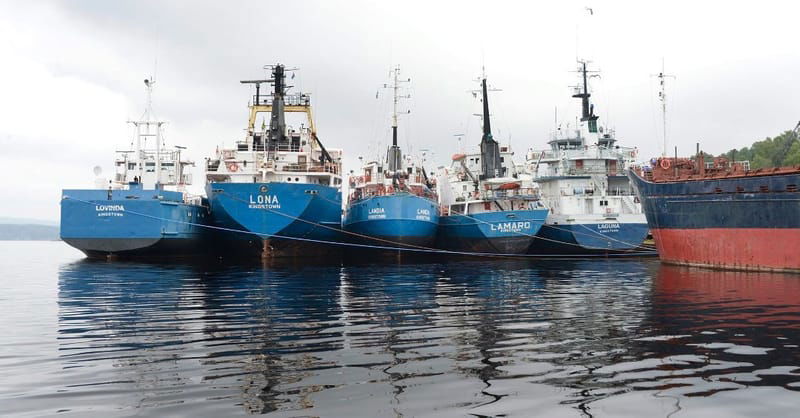Vessel Lay-up and Reactivation Services

Leeships engineering team understand the important of good lay-up practice in order to preserve the value of a vessel during periods of inactivity.
The reasons for lay-up might be to wait for a better scrap price or to deactivate the vessel due to over-capacities with the intention of activating it again later. Lay-up periods can be as short as a few weeks and as long as five years and more.
Treatment of vessels differs according to the lay-up period and the reason for the lay-up. As the treatment differs so do the obligations and requirements assigned by class, flag state and port authorities. They all have their influence.
Layup Management:
We offer a full range of Professionally Managed and Cost Effective Comprehensive Lay-Up Solution in one Combine Package (from layup till reactivation all inclusive) on major layup sites worldwide in following mods:
Hot Lay-Up (up to 6 months)
Semi-cold Lay-Up (6-12 months)
Cold Lay-Up (12-24 months)
Long-term Cold Lay-Up (beyond 24 months)
Customized Lay-Up Solutions
Layup services:
Watchmen services during layup, port calls, under repairs and dry-dock.
Watchmen and trusty sequestrations services for detained or arrested ships.
We provide a systematic and cost optimal preparation for lay-ups with focus on safety and cost efficiency.
We offer re-activation and re-certification package when the asset is ready for deployment/trading
Our layup and watchkeeping services are in compliance with the IMO Guideline for layup of ships.
We arrange to preserve the ships during layup which ultimately result in reduced re-commissioning time and cost.
Hot or cold layup:
The operator must first decide on either a hot lay-up or a cold lay-up. In a hot lay-up condition the ship engines and machinery keep running so that the re-commissioning of the vessel can be carried out very quickly, and the vessel’s preservation is much easier and cheaper compared to a cold lay-up. The operational costs are higher, more crew is required and machinery in operation has the increased cost of consumables.
In a cold lay-up vessels are only supplied with emergency energy for lights, windlass / mooring winches and fire extinguishing – often by portable generators installed on deck. Depending on the length of lay-up, three weeks or more should be expected for re-commissioning. Should the lay-up be five years or longer then the re-commissioning time is unpredictable and can last months.
The main concern here is preservation against humidity, leakage of chemicals and condition of the hull (sea chest / sea water lines).
To allow dehumidification of engine rooms (depending on DP level) a dehumidification machine has to be installed and connected to the engine / FRAMO room. Other items to keep in mind are:
Sea water tanks
Cargo rooms
Food storage and cold storage rooms
Sewage and waste tanks
Ballast tanks
Bow thruster rooms
Classes, Flag States and Port Authorities
Minimum manning during cold lay-up is expected by many classes and port authorities to cover at least fire, leakage, mooring and security watch. However, the Safe Manning Certificate applies only to vessels in operation, while vessels are safely at anchor, within port limits or alongside. Instead, requirements of flag states and port authorities apply to laid-up vessels. Flag states in general require notification of vessels laid-up for longer periods – the requirements vary from short notification to a detailed lay-up plan.
Example of hot lay-up plan:
Lay-up procedures
Proposed manning
Emergency response (fire, collisions, hurricanes, etc)
Navigation watches (if at anchor)
Security plan
Class surveys / audits
Procedures for re-commissioning
Example of minimum manning requirements (hot lay-up):
One master, one officer, three deck crew
One CE , two engineering crew
Sufficient crew to maintain safety functions
In addition, class surveys take place – for example the DNV carries out an annual lay-up survey (covers watertight integrity, bilge system, fire hazards and equipment in use).
Where to put it?
Ideal places for lay-up have good grounds for anchoring or mooring, and almost no current or heavy winds (e.g. should be outside of the typhoon belt). Furthermore it should be legal and authorized by the local port authority.
Another possibility is a cheap lay-up berth. This choice avoids supply problems for the watch keepers and grants easy access to the vessel for surveyors and crew, however, it comes at the cost of renting the berth.
Reactivating idle vessels:
Depending on the length of the idle time a number of surveys have to be carried out before the vessel can continue with its service. For example some class authorities require a sea trial when the vessel has been laid up for 12 months or longer. Furthermore, expired certificates need to be renewed before the vessel can be re-commissioned.


